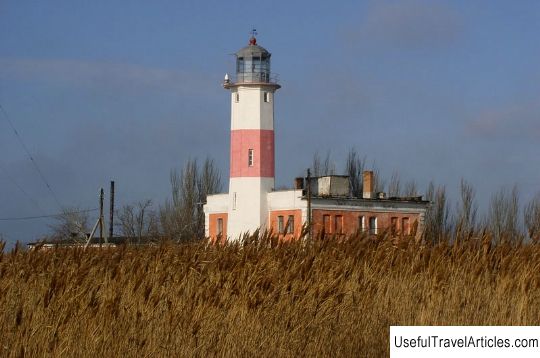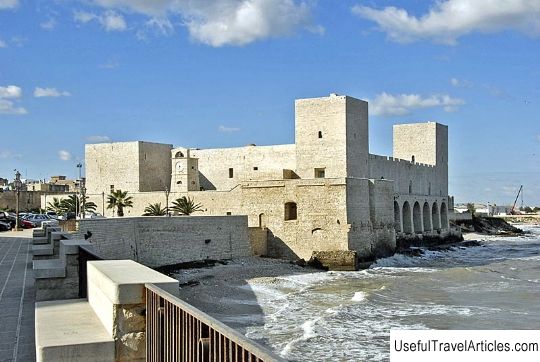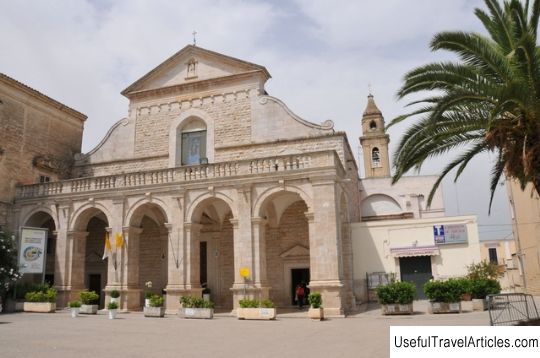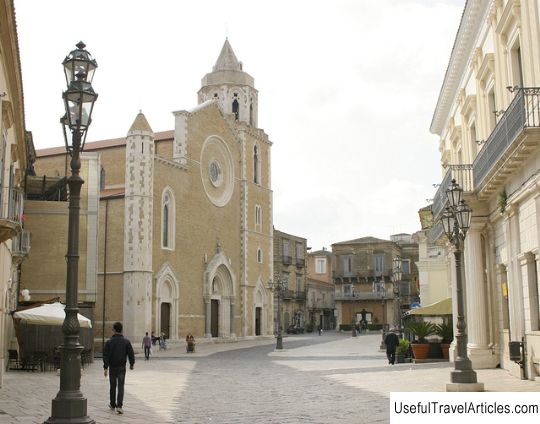Barletta description and photos - Italy: Apulia
Rating: 8,4/10 (593 votes) 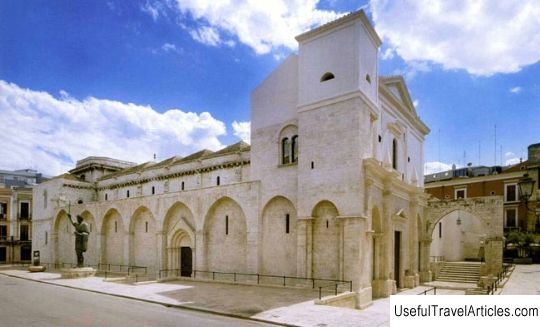
Barletta description and photos - Italy: Apulia. Detailed information about the attraction. Description, photographs and a map showing the nearest significant objects. The title in English is Barletta. Photo and descriptionBarletta is a city located in the north of the Italian region of Apulia, with a population of about one hundred thousand people. It is famous, first of all, for the Colossus of Barletta, a huge bronze statue of the Roman emperor, presumably Theodosius II. And here in 1503 the so-called Disfida di Barletta took place - a battle in which 13 Italian knights led by Ettore Fieramosca defeated the French knights. In addition, the city of Canne della Bataglia, which flourished in the era of Ancient Rome and was destroyed by the Normans in the Middle Ages, was once located on the site of modern Barletta. And nearby is the site of the famous battle of the Romans with the Carthaginians under the leadership of Hannibal. Barletta is located on the Adriatic coast of Apulia, there, where the rocky shores of the Gulf of Manfredonia are covered with silt of the Ofanto River. The latter has always had a significant impact on the development of agriculture in the region. The city itself boasts long sandy beaches to the east and west of its port. Barletta existed long before the arrival of the Romans in these places, which is confirmed by the settlement discovered here in the 4th century BC. In ancient times, it was known as Bardulos or Barulum. The first to settle here were the Phoenicians - they founded a trading settlement, from where goods were transported north, to the country of the Etruscans. This area was famous for its wines, for which it received the appropriate name - the Land of Wines. In the Middle Ages, Barletta was a stronghold of the Normans and Lombards and became an important transit point for the Crusaders, knights of the Teutonic order and the Templars. After the nearby city of Cannet was destroyed by the Normans, many of its surviving residents moved to Barletta, which caused the rapid development of the city. In the 16th century, it served as a kind of fortress for the Spanish rulers of southern Italy, but by the middle of the 19th century, during the unification of Italy, it was one of the country's many poor cities. Today Barletta is a small town that is not particularly spoiled by tourists. Meanwhile, there are a number of interesting historical sites here. For example, an ancient castle, built in the 10th century by the Normans. During the period of the Crusades, it was used as a resting place for soldiers sent to the Holy Land. In the middle of the 13th century, the castle was expanded and fortified by order of Emperor Frederick II, and three centuries later, four massive bastions were added to it. Adjacent to the aforementioned Colossus of Barletta is the 12th century Romanesque basilica of San Sepolcro with distinct oriental architecture. Moreover, its facade is made in the Baroque style. On the site of the former temple of Neptune, today stands the Cathedral of Santa Maria Maggiore - a wonderful example of a mixture of Romanesque and Gothic styles. Inside, on the lower level, are the tombs of the 3rd century BC, over which an early Christian basilica was built in the 6th century, and another in the 9th century. The current building of the cathedral was erected in the 12th century and slightly modified in the 14th century. Also noteworthy is the 11th-century Church of San Giacomo, also built on the site of the ancient Roman temple of Isis. Finally,         We also recommend reading Ruins of the Tavira castle (Ruina do castelo) description and photos - Portugal: Tavira Topic: Barletta description and photos - Italy: Apulia. |
